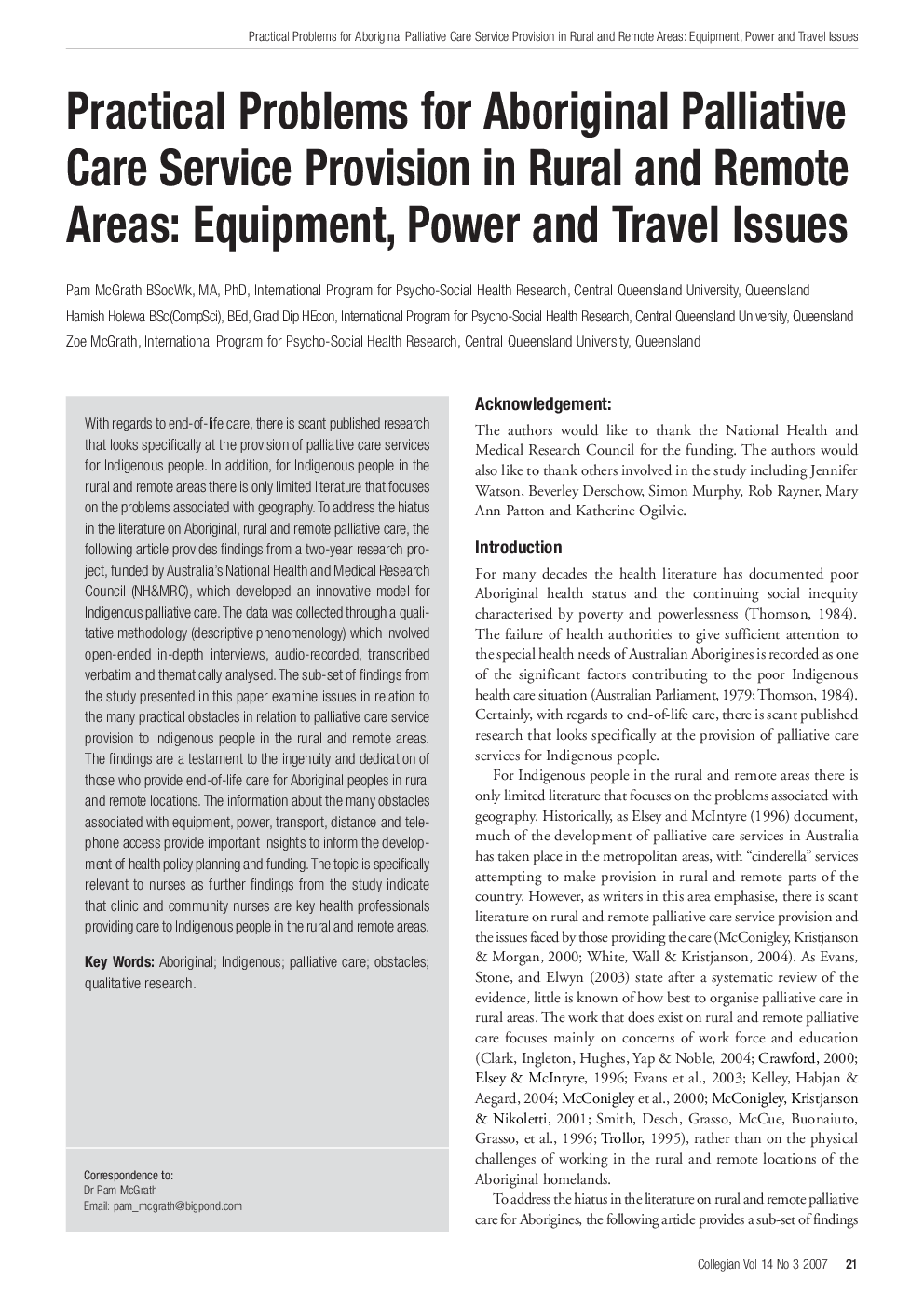| Article ID | Journal | Published Year | Pages | File Type |
|---|---|---|---|---|
| 2646403 | Collegian | 2007 | 6 Pages |
With regards to end-of-life care, there is scant published research that looks specifically at the provision of palliative care services for Indigenous people. In addition, for Indigenous people in the rural and remote areas there is only limited literature that focuses on the problems associated with geography. To address the hiatus in the literature on Aboriginal, rural and remote palliative care, the following article provides findings from a two-year research project, funded by Australia's National Health and Medical Research Council (NH&MRC), which developed an innovative model for Indigenous palliative care. The data was collected through a qualitative methodology (descriptive phenomenology) which involved open-ended in-depth interviews, audio-recorded, transcribed verbatim and thematically analysed. The sub-set of findings from the study presented in this paper examine issues in relation to the many practical obstacles in relation to palliative care service provision to Indigenous people in the rural and remote areas. The findings are a testament to the ingenuity and dedication of those who provide end-of-life care for Aboriginal peoples in rural and remote locations. The information about the many obstacles associated with equipment, power, transport, distance and telephone access provide important insights to inform the development of health policy planning and funding. The topic is specifically relevant to nurses as further findings from the study indicate that clinic and community nurses are key health professionals providing care to Indigenous people in the rural and remote areas.
